Introduction
Chemicals
are a very essential part of the textile industry. In denim wash, different
stages used different chemicals for achieving a proper wash effect. If rinse
wash use one kind of chemical and other wash need other chemicals.
Some important chemicals for denim wash
There
are various kinds of chemicals used in textile finishing. Some important
chemicals which are used in denim washing are as below-
1. Detergent
A
detergent is a surfactant or a mixture of surfactants with cleansing properties
in dilute solutions. These substances are usually alkyl benzene sulfonates, a
family of compounds that are soap-like but more soluble in hard water because
polar carboxylates are less likely to bind to polar sulfonates than calcium and
other ions found in hard water. Laundry detergents contain mostly anionic and
non-ionic surfactants. Cationic surfactants are generally incompatible with
anionic detergents and do not have the ability to clean; these are only
employed for certain special effects such as fabric softeners, antistatic
agents, and biocides. Zwitterionic surfactants are rarely employed in laundry
detergents due to their low cost. Most detergents use a combination of various
surfactants to balance their performance.
2. Anti-Back staining agent
Anti-back
staining agents are polymers designed to prevent the re-deposition of dyes on
substrates during wet processing, particularly for denim. When fading, the
loose blue colors are removed from the fabric and randomly redistribute
themselves, leaving a bling effect on the finished garment. Anti-back staining
agents help to deliver high contrast in indigo-heavy fabrics. The back staining
rate is directly proportional to the temperature, the type of enzyme agent used
& the number of rinsing cycles. Anti-back staining agent for denim
processing, which prevents re-disposition and enhances brightness.
3. Acetic Acid
Acetic
acid is systematically named ethanoic acid as a colorless liquid organic compound
with the chemical formula CH3COOH. When unchanged it is sometimes called
glacial acetic acid. Vinegar is no less than 4% acetic acid by volume, making
acetic acid the main ingredient in vinegar other than water. Acetic acid has a
pungent taste and pungent odor. In addition to family vinegar, it is mainly
produced as a precursor to polyvinyl acetate and cellulose acetate. It is
classified as a weak acid as it dissolves only in a partial solution but dense
acetic acid can be corrosive and attack the skin.
4. Bleaching Agent
Bleach
is the common name for any chemical product that is biologically local and used
to clean and remove stains at home. This often refers specifically to a dilute
solution of sodium hypochlorite, also called "liquid bleach". Bleaches
work by reacting with many colored organic compounds like natural pigments and
converting them into colorless dyes. Most bleaches are oxidizing agents, and some
are reducing agents.
A.
Chlorine, a powerful oxidizer, is an active agent in many household bleaches.
Since pure chlorine is a toxic corrosive gas, these products generally contain
hypochlorite that releases chlorine when needed. "Bleaching powder"
usually means a composition containing calcium hypochlorite.
B.
Bleaching agents that do not contain chlorine are usually made based on peroxides
such as hydrogen peroxide, sodium percarbonate, and sodium perborate. These
bleaches are called 'non-chlorine bleach', 'oxygen bleach', or 'color-safe
bleach'.
C.
There is a niche used to reduce bleach, such as sulfur dioxide used to bleach
wool, either as a gas or from a solution of sodium dithionite and sodium
borohydride.
5. Caustic Soda
Sodium hydroxide/caustic soda is a highly caustic base and alkali that decomposes proteins at normal ambient temperatures and can cause deadly chemical burns. It is highly soluble in water and easily absorbs moisture and carbon dioxide from the air. It forms a series of hydrates NaOH.nH2O. The monohydrate NaOH•H2O crystallizes from a solution of water between 12.3 and 61.8 °C. It is a white solid ionic compound consisting of sodium cations Na+ and hydroxide anions OH−. Commercially available sodium hydroxide is often this monohydrate and published data may refer to it instead of anhydrous compounds. As a simple hydroxide, it is frequently used in neutral water and acidic hydrochloric acid as well as by chemistry students to demonstrate the pH scale.
6. Soda Ash
Sodium
carbonate is an inorganic compound with the Na2CO3 formula and its various
hydrates. All forms are white, water-soluble salts. All forms have a strongly
alkaline taste and give a moderately alkaline solution in water. Historically
it was derived from plant ash in sodium-rich soils. Since the ashes of these
sodium-rich plants were markedly different from wood ashes, sodium carbonate
came to be known as soda ash. Sodium carbonate
is produced in large quantities from sodium chloride and limestone by the
Solvay process. For its largest applications, sodium carbonate is used in the
manufacture of glass, paper, rayon, soaps, and detergents.
7. Sodium Hyposulphate
Sodium
thiosulfate is an inorganic compound with the formula Na2S2O3.xH2O. Usually, it
is available as white or colorless pentahydrate, Na2S2O3 • 5H2O. Hard is an
efflorescent crystalline material that dissolves well in water. It is used in
gold mining, water treatment, and analytical chemistry, in the development of
silver-based photographic films and prints, and in medicine. The medical uses
of sodium thiosulfate include the treatment of cyanide poisoning and
pityriasis. It is on the World Health Organization's (WHO) list of essential
medicines, the safest and most effective medicine in the health system.
8. Laundry Enzyme
Laundry enzyme is a type of biological enzyme that is often used in the
laundry industry and is still the largest industrial enzyme application thus the laundry enzyme plays an important role in supporting both household
laundry and relative industrial business. Laundry enzymes are a subclass of
enzymes, and thus they also contain biological catalysts with multi-molecular
structures. These are usually present as little blue particles or blades in both
liquid and powdered detergents and once in contact with water they dissolve
quickly Act as catalysts, laundry enzymes increase the reaction rate between
stains and aqueous solutions.
9. Potassium permanganate
Potassium
permanganate is an inorganic compound composed of the chemical formula KMnO4
and a combination of K + and MnO-4. It is hard of purple-black crystals that
dissolve in water to give an intense pink or purple solution. Potassium
permanganate is widely used in the chemical industry and laboratories as a
strong oxidizing agent, and also as a medication for dermatitis, cleaning
wounds, and general disinfection. It is on the WHO Model List of Essential
Medicines, the safest and most effective medicines needed in a health system.
10. Hydrogen peroxide
Hydrogen peroxide is a chemical compound with an H2O2 formula. In its pure form, it is a
very pale blue liquid, somewhat more viscous than water. Hydrogen peroxide is the
simplest peroxide. H2O2 is used as an oxidizer, bleaching agent, and
antiseptic. Concentrated hydrogen peroxide, or high-test peroxide, has been
used as a reactive oxygen species and propellant in rocketry. Its chemistry is
dominated by the nature of its volatile peroxide bonds.
11. Sodium Metabisulphite
Sodium
Metabisulphite or sodium pyrosulfite is an inorganic compound of the chemical
formula Na2S2O5. The substance is sometimes known as disodium Metabisulphite.
Sodium Metabisulphite is used as a disinfectant, antioxidant, and preservative
agent.
12. Resin
In
polymer chemistry and physics, the resin is a solid or highly viscous substance
of plant or synthetic origin that is usually converted to polymers. Resins are
usually a mixture of organic compounds. This article focuses on naturally
occurring resins. Plants equip resin for their protective advantage in response
to injury. The resin protects the plant from insects and germs. Resins confuse
large amounts of vegetables, insects, and pathogens, while volatile phenolic
compounds can attract beneficial parasitoids or herbivores that attack plants.
13. Salt
Salt
is a mineral composed primarily of sodium chloride (NaCl), a chemical compound
that includes a large class of salts; salt in its natural form as a crystal mineral
is known as rock salt or halite. Seawater is rich in salt which is the main
mineral. The amount of solids per liter of seawater in the open ocean is about
35 grams, and Salinity is 3.5%. In the textile industry, salt is used for
electrification in the dyeing industry. Each fabric has an amount of color
absorption. Salt is used when you need more colored drying on clothing or
fabrics. In other words, salt is used as a color-determining agent.
14. Softener
A fabric softener is a conditioner that is usually washed in a washing machine and applied to the laundry during the cycle. Unlike laundry detergents, fabric softeners can be considered laundry aid after treatment. Machine washing puts a lot of mechanical stress on textiles, especially natural fibers such as cotton and wool. The fibers on the fabric surface squash and burn and make the laundry feel stiff when air-dried. The final wash adds a soft fabric softener to make the laundry feel softer

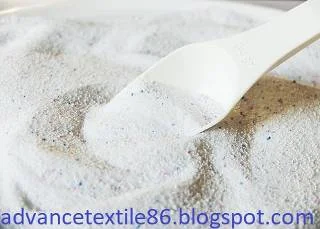
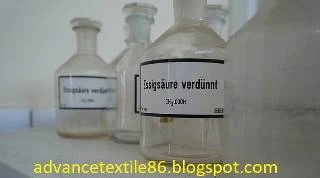
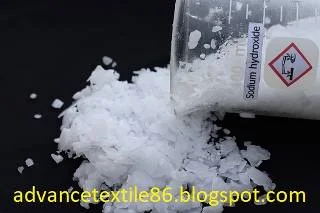
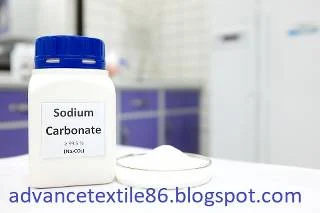

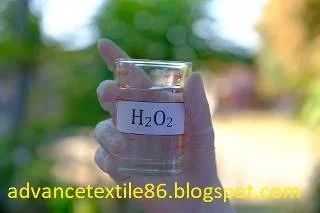








0 Comments